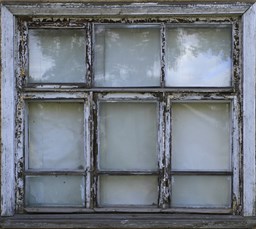Milk Paint for your house makeover? Why not! I’m sure a lot of you will ask why we are blogging about milk paint when it seems a somewhat unusual type of paint to use on houses or commercial establishments. Well, this blog post is more of a milk paint FAQ’s, with tips on how and where to use it best. As it turns out, a lot of our customers are interested in using this type of paint and we do get many inquiries on whether or not milk paint can be used on interior walls. But before we move on further, let me first tell you what milk paint is.
Milk paint is a water-based paint that usually comes in powder form. And, unlike most paints that come in cans, milk paint comes in sacks. It is made of all-natural ingredients, typically milk and lime, so it is very safe to use as it is non-toxic.
This type of paint has been around for thousands of years and is nowadays often used when you want to achieve a “French colonial style” design. And surely, when you walk into French restaurants or French cafes, you will see milk paint being used on interior walls and furniture to achieve a perfect French look and feel.
Milk paint can be used to create authentic reproductions and replicas of antique furniture or modern pieces that do not rely on any connection with the past. The use of milk paint on interior walls and furniture is not for the faint of heart, though. We do not recommend this to be the type of paint to use when DIY painting. It takes a significant amount of time and patience to master the art of milk painting and achieve perfect results. Also, mind you, milk paint doesn’t come cheap.
However, if you’d still want to try your hand at milk painting, here’s what you should remember:
Have a Good Paint Stirrer
Our first and one of the most important advice is to not underestimate this part. We’ve heard a lot of “horror stories” just overcoming the “mixing” portion of milk painting. So be aware that this is the part where most DIYers almost gave up, and if you want to achieve milk painting success, be sure to spend a good amount of patience on this first step of the process.
Milk Paint is Best Used on Porous Materials
For interior walls or furniture painting, milk paint is best used on untreated wood. Many have tried using milk paint on non-porous materials or finished walls and ended up putting multiple layers only to achieve the desired look. Some even had to use a bonding agent just to make the paint stick, which means additional time and added cost. Thus, another tip if you’re using a non-porous material is to have enough sacks of milk paint powder so you won’t end up making several trips to the paint store. The best thing about milk paint is that if you buy more than what you need, you can easily store it. These won’t dry up on you or expire as long as they’re still in powdered form.
Start Small
If you are a beginner in milk painting, do not experiment on the largest wall or the biggest furniture. Start with the smallest non-porous furniture or a narrow wall in your home. Working on a small portion of your walls, which you could perhaps turn into an accent wall, will give you an idea of how long it will take you to complete the whole room.
Dark on Dark
Whether you want a darker or a lighter finish, if you are painting dark-colored wood, use a dark shade of milk paint color as a primer, let it dry, then apply a double coat of lighter shade of milk paint. If you haven’t read our previous post on priming, click here to know what priming is and how important it is in painting. And for best milk painting results, apply a good paste finishing wax.
I hope this article helps. If you have more questions or if you need help with your milk painting project, it is best to consult an expert paint technician to ensure that your room or furniture will look perfect in no time.

